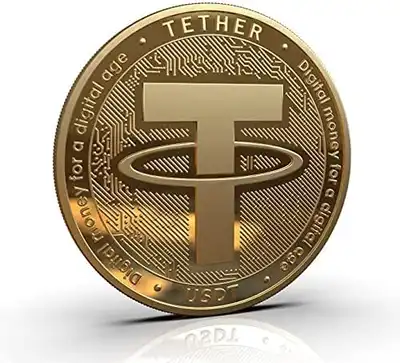Stablecoins have emerged as a vital component of the cryptocurrency ecosystem, providing stability and mitigating the volatility inherent in cryptocurrencies like Bitcoin and Ethereum. A stablecoin is a digital asset pegged to a stable value, often tied to fiat currencies like the US Dollar or Euro. These stablecoins offer benefits such as seamless transactions, reduced risk exposure, and increased adoption in various sectors. This article aims to shed light on the three main types of stablecoins: fiat-collateralized, crypto-collateralized, and algorithmic, and how they function within the digital financial landscape.
- Fiat-Collateralized Stablecoins
Fiat-collateralized stablecoins are the most straightforward and widely adopted type. They are backed by a reserve of fiat currency or traditional assets like government bonds, held by a central entity or custodian. For every stablecoin issued, an equivalent amount of fiat currency is deposited in a bank account or custodial service, ensuring a 1:1 peg to the underlying currency.

These stablecoins offer a high level of stability and security, as they are backed by tangible assets. Examples of popular fiat-collateralized stablecoins include Tether (USDT), USDC, and TrueUSD (TUSD). Users and investors can easily redeem these stablecoins for fiat currency, ensuring liquidity and trust in the system.
However, the main challenge with this type of stablecoin lies in maintaining transparency and ensuring the one-to-one backing ratio. Critics have raised concerns about the centralization of reserves and the potential risk of mismanagement, fraud, or regulatory issues.
- Crypto-Collateralized Stablecoins
Crypto-collateralized stablecoins aim to tackle the centralization issue seen in fiat-collateralized stablecoins. Instead of backing stablecoins with fiat currencies, these stablecoins are collateralized by other cryptocurrencies. Ethereum is commonly used as the underlying collateral due to its smart contract capabilities.
To issue crypto-collateralized stablecoins, users lock a certain amount of cryptocurrencies (e.g., Ether) into a smart contract. The smart contract algorithm calculates the stablecoin issuance based on the value of the locked collateral. As long as the value of the collateral remains stable, the stablecoin’s value is maintained.
One popular example of a crypto-collateralized stablecoin is DAI, which operates on the Ethereum blockchain. DAI is collateralized by various cryptocurrencies, making it decentralized and less vulnerable to regulatory scrutiny. However, it introduces a new challenge – the stability of the underlying cryptocurrency market. If the collateral’s value declines significantly, it can lead to under-collateralization, potentially destabilizing the stablecoin’s value.
- Algorithmic Stablecoins
Algorithmic stablecoins, also known as “crypto-native” stablecoins, take a unique approach to achieve stability. These stablecoins rely on complex algorithms and smart contracts to manage the token’s supply and demand dynamically. Instead of having collateral to back the stablecoin’s value, its supply is algorithmically adjusted based on market conditions.
When the stablecoin’s price is above its peg, the algorithm will decrease the token supply by means such as “burning” tokens or locking them into a smart contract. Conversely, when the price is below the peg, the algorithm may mint new tokens to increase the supply and stabilize the price.
Ampleforth (AMPL) and Terra (LUNA) are prominent examples of algorithmic stablecoins. They offer an innovative and decentralized approach to maintaining stability, but they are not without challenges. The lack of collateral can make these stablecoins more susceptible to speculative attacks and market manipulation, potentially leading to significant price fluctuations.
Stablecoins play a crucial role in the cryptocurrency space, providing stability and reducing volatility. Each type of stablecoin – fiat-collateralized, crypto-collateralized, and algorithmic – comes with its unique strengths and weaknesses.
Fiat-collateralized stablecoins offer a high level of stability, but concerns about centralization and transparency persist. Crypto-collateralized stablecoins provide decentralization but are exposed to the volatility of the underlying cryptocurrency assets. Algorithmic stablecoins offer an innovative, decentralized approach but are still relatively experimental and face challenges related to price manipulation.
As the cryptocurrency market continues to evolve, stablecoins will likely see further development and improvement. Regulatory clarity, technological advancements, and user trust will play vital roles in shaping the future of stablecoins, making them an essential component of the broader financial ecosystem.




